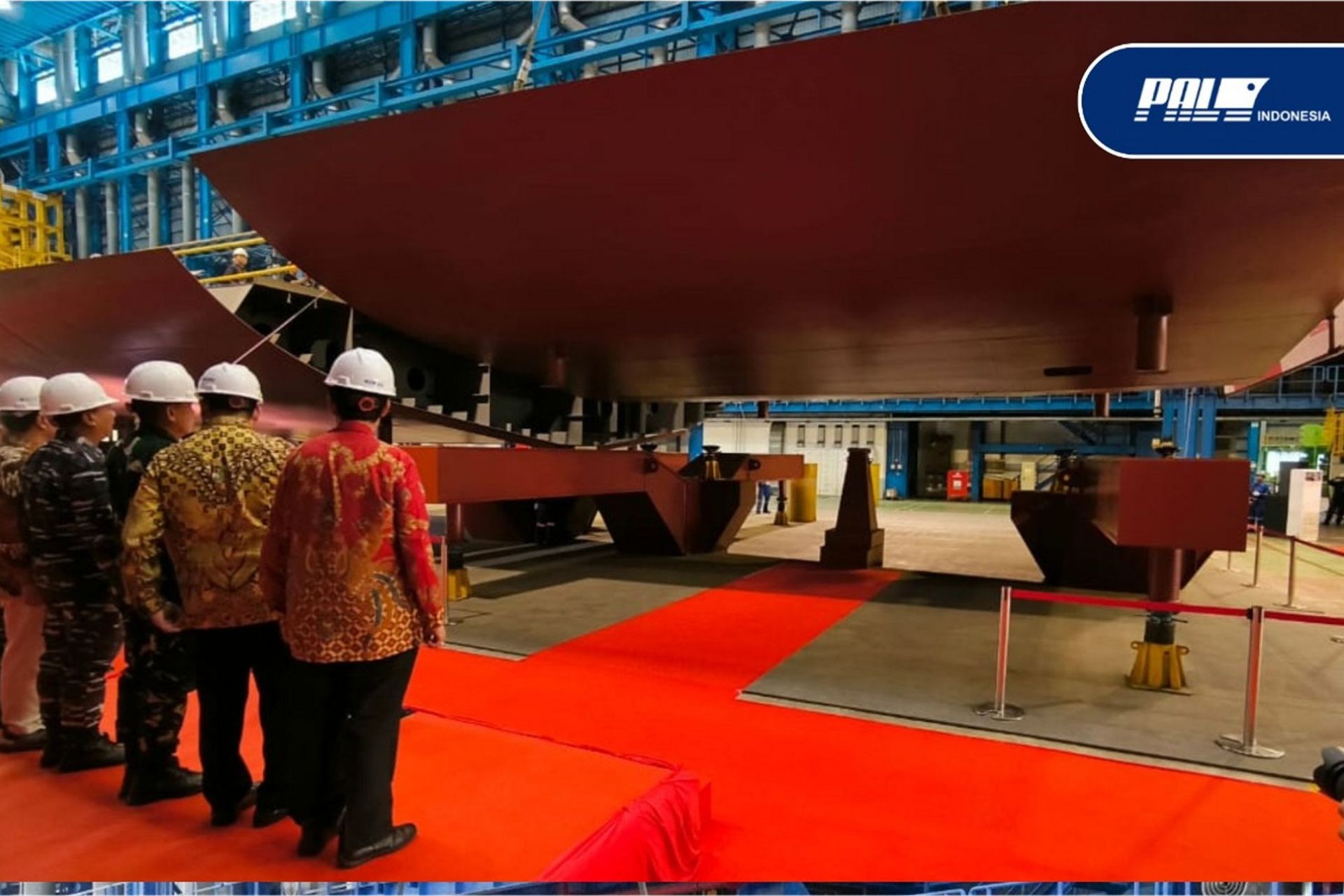Breaking News
PT PAL Indonesia Begins Construction of Second Merah Putih Frigate.
According to information published by PT PAL on November 15, 2024, the Indonesian company has achieved a significant milestone in the national maritime defense industry by conducting the keel laying ceremony for the second Merah Putih Frigate. This event, held at PT PAL's shipyard in Surabaya, East Java, marks the official commencement of the vessel's construction. The ceremony was attended by key stakeholders, including representatives from the Indonesian Ministry of Defense and the Indonesian Navy (TNI AL).
Follow Army Recognition on Google News at this link

PT PAL Indonesia holds the keel laying ceremony for the second Merah Putih Frigate, marking the start of its construction. (Picture source: PT PAL Indonesia)
The Merah Putih Frigate project is part of Indonesia's broader strategy to modernize its naval fleet and enhance the capabilities of its domestic defense industry. These frigates are based on Babcock's Arrowhead 140 design, featuring a length of 140 meters and a displacement of approximately 5,996 tons. They are equipped with advanced weaponry and sensor systems, including a vertical launching system (VLS) for surface-to-air and surface-to-surface missiles, as well as two 76 mm naval guns.
The first steel cutting for the second Merah Putih Frigate took place on June 5, 2024, marking the beginning of the physical construction phase. The keel laying ceremony, traditionally a pivotal moment in shipbuilding, signifies the laying of the ship's backbone and the start of its assembly.
Indonesian Defense Industry
Indonesia's journey toward defense industry indigenization is rooted in its aspiration for self-reliance and national security enhancement. This ambition took shape in the early 1950s when the country began to nationalize key industries, including defense-related sectors. A landmark in this trajectory was the creation of state-owned enterprises like PT Pindad in 1983, which has since been a cornerstone in the development of indigenous defense products such as the SS2 rifles and Komodo tactical vehicles.
The government has emphasized the indigenization of defense capabilities through strategic policies, notably Law Number 16 of 2012. This framework mandates the establishment of a professional and innovative defense industry capable of reducing dependency on foreign imports. Another key initiative is the Minimum Essential Force (MEF) program, introduced in 2009, which outlines a phased modernization of the Indonesian Armed Forces to enhance critical capabilities.
Indonesia's defense industry is supported by major players like PT Pindad, PT PAL Indonesia, PT Dirgantara Indonesia (Indonesian Aerospace), and PT Dahana. These companies have been consolidated under the Defend ID holding entity to foster collaboration and operational efficiency. PT PAL, for instance, is renowned for its naval vessels, while PT Dirgantara produces aircraft, contributing to a diverse and increasingly capable domestic defense ecosystem.
Despite these advancements, Indonesia faces challenges such as budgetary constraints, technological dependencies, and global competitiveness. Historically, defense spending has been limited, constraining research and development efforts. The reliance on foreign components also underscores the need for greater technological independence. To address these issues, the government has increased defense allocations and pursued international collaborations, such as the KF-X/IF-X fighter jet development with South Korea, which facilitates technology transfer and capacity building.


























